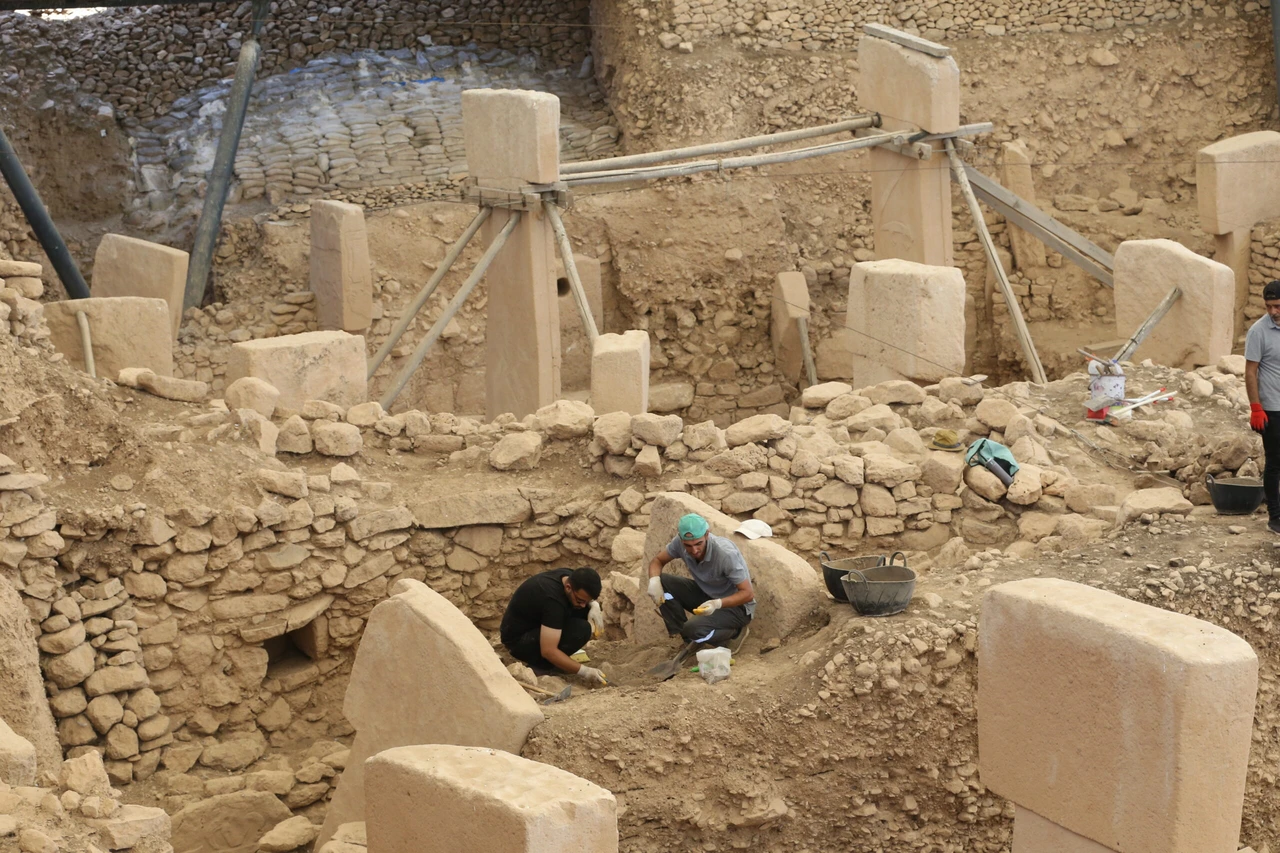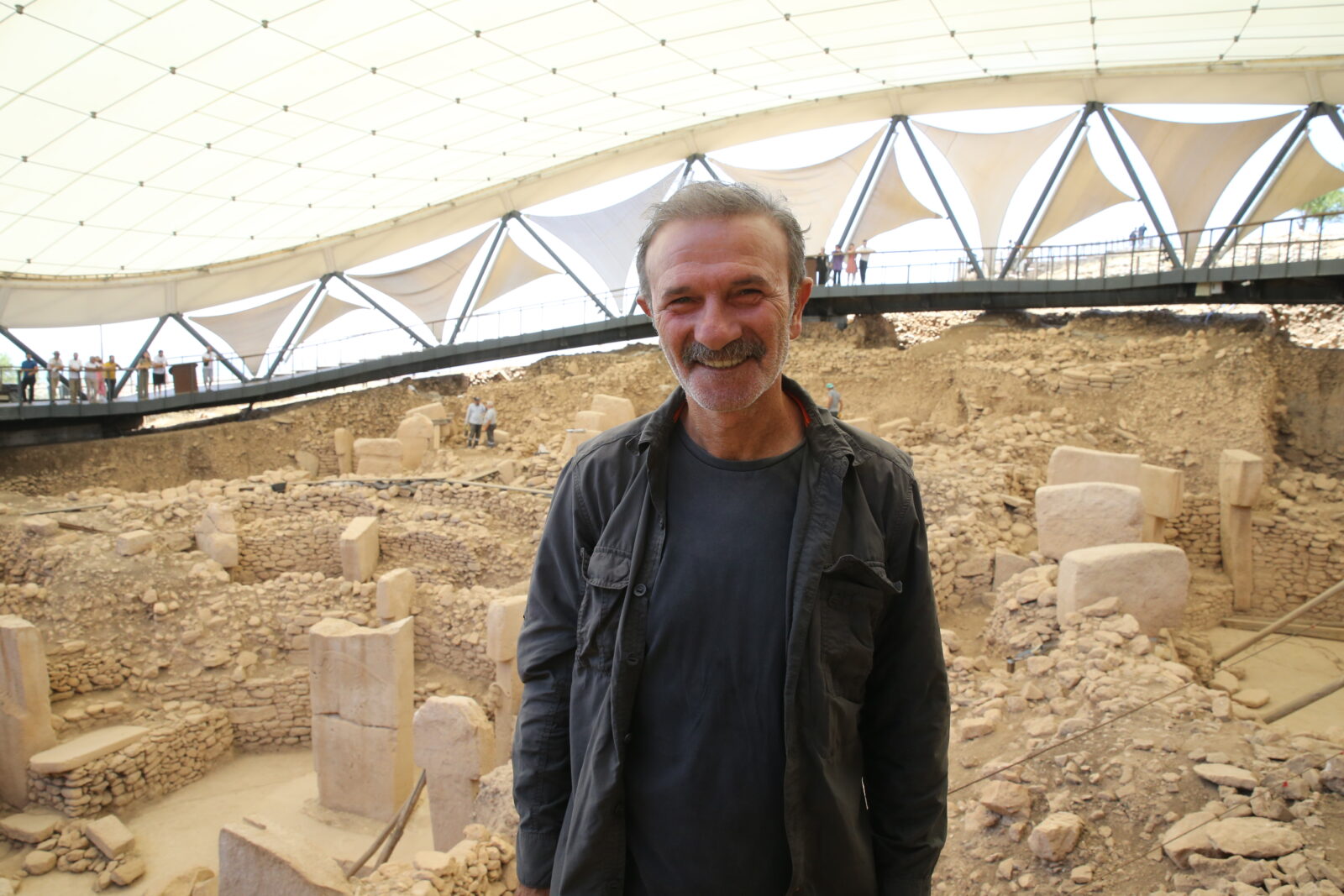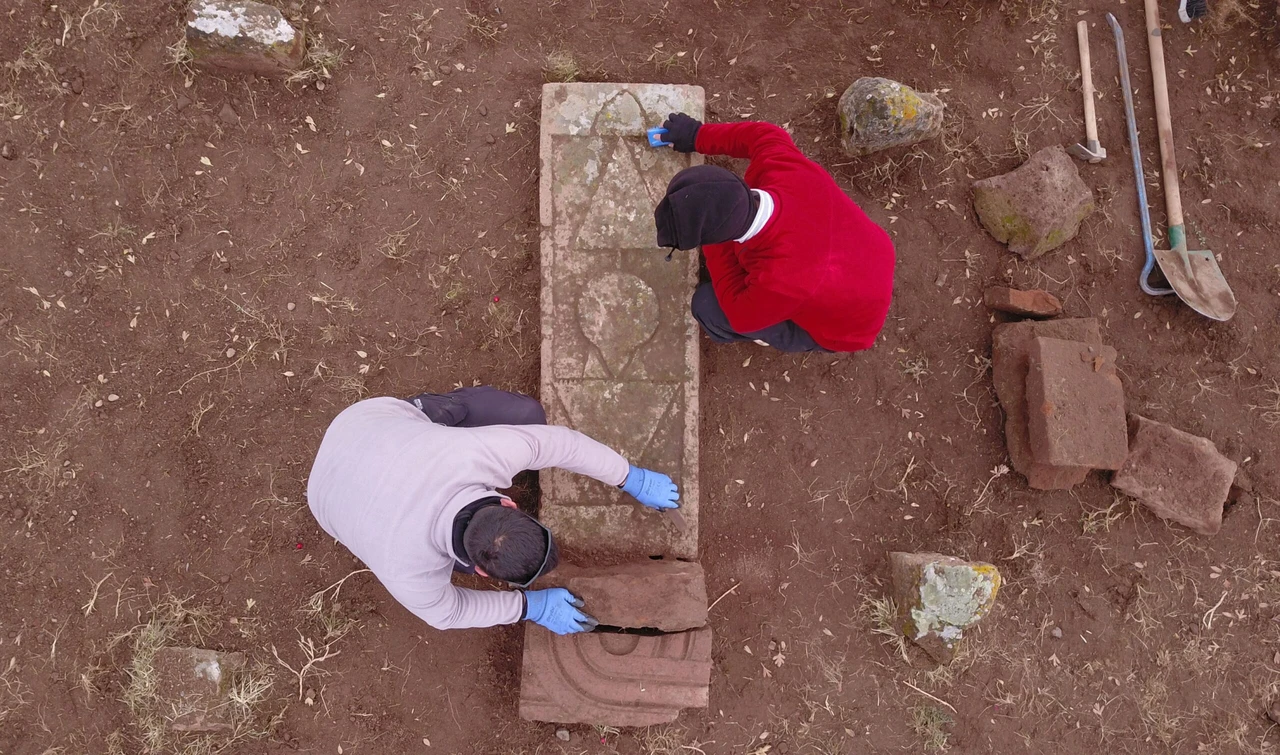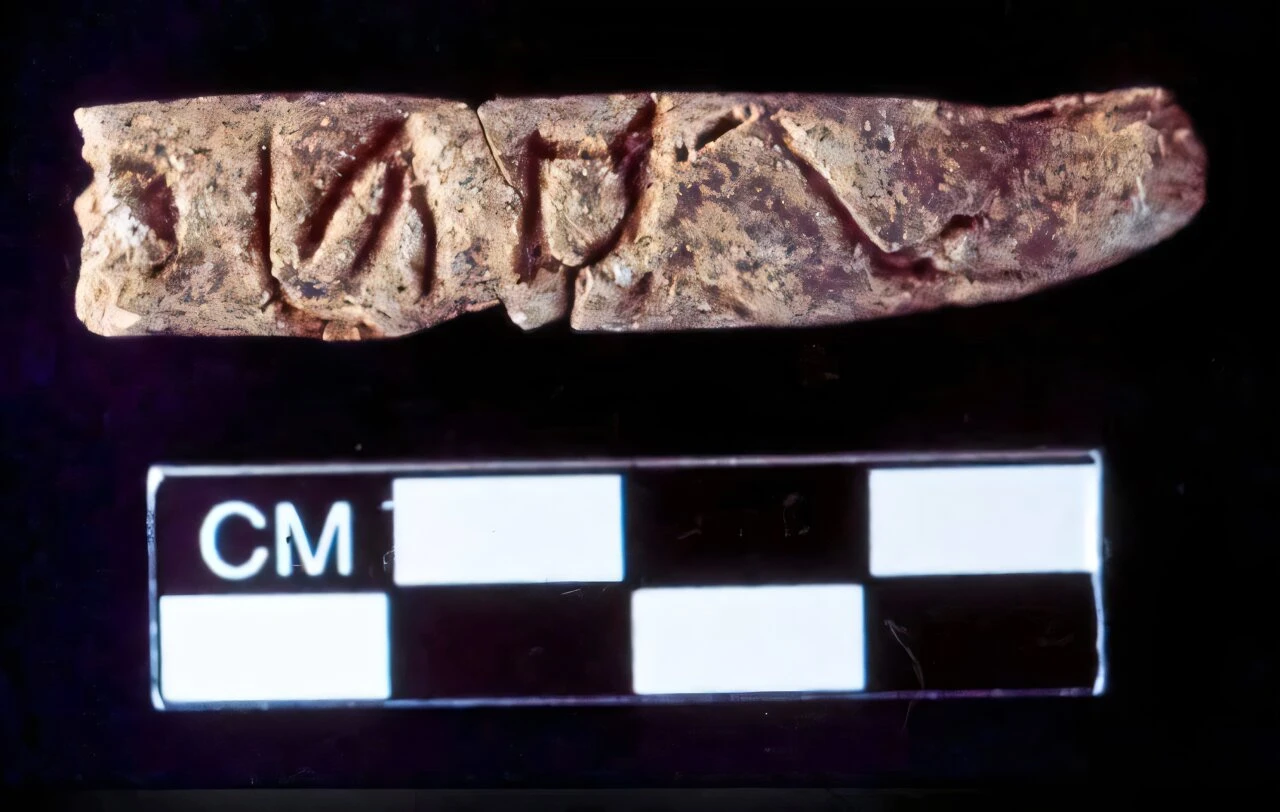Traces of life from 12,000 years ago unearthed in Sanliurfa, Turkiye
 Ongoing excavations at 10 different sites, including Gobeklitepe and Karahantepe, within the scope of the "Tas Tepeler (Stone Hills) Project" in Sanliurfa reveal human life styles 12,000 years ago, Türkiye, August 2, 2024. (AA Photo)
Ongoing excavations at 10 different sites, including Gobeklitepe and Karahantepe, within the scope of the "Tas Tepeler (Stone Hills) Project" in Sanliurfa reveal human life styles 12,000 years ago, Türkiye, August 2, 2024. (AA Photo)
The ongoing “Tas Tepeler (Stone Hills) Project” in Sanliurfa, which includes important excavation sites like Gobeklitepe and Karahantepe, is revealing aspects of human life from 12,000 years ago. The project is providing significant insights into the Neolithic period through its excavations.
Excavations uncover Neolithic secrets
Sanliurfa Neolithic Age Research Project continues its work at key sites including Gobeklitepe, Karahantepe, Cakmaktepe, Sayburc, Sefertepe, Gurcutepe, Harbetsuvan, Yeni Mahalle, Mendik, and Sogut Tarlasi.
These excavations are uncovering a range of Neolithic artifacts, while laboratory analysis is providing valuable data about the lifestyle of people from that era.

Prof. Necmi Karul, the head of the Gobeklitepe and Karahantepe excavations, said the excavation work is ongoing this year.
He emphasized that summer months are focused on fieldwork, with data being continuously evaluated.
“From around 9600 B.C., we have uncovered evidence of year-round settlements in the region. Initial findings show that while deer hunting was prevalent, foraging played a significant role in subsistence, eventually leading to food production,” Karul stated.

Recent excavations at Karahantepe have provided clearer information about the Neolithic period. Prof. Karul noted, “We have found carbonized plant remains such as seeds, tubers, and fruit shells. Among these, there are cereals like wheat and barley. Further studies will determine the specific species and whether they were domesticated.”
Additionally, various legume seeds, including wild vetch, chickpeas, lentils, and peas, were discovered.

The Tas Tepeler Project spans 12,000 years, reflecting different time periods and creating a comprehensive historical picture.
Karul added, “This extensive work will provide us with new insights not just about Gobeklitepe but about other settlements in the region as well.”
These discoveries are enriching the historical narrative of Sanliurfa and shedding light on the lesser-known aspects of the Neolithic era, contributing significantly to the region’s cultural heritage.



